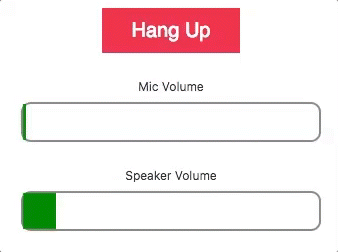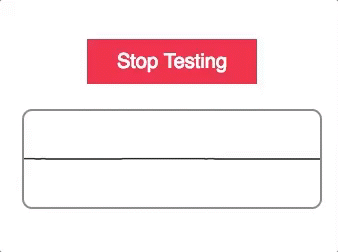Twilio Announces the General Availability of Twilio Client JavaScript SDK 1.4
Time to read: 3 minutes

Today we’re excited to announce the General Availability of our Twilio Client JavaScript SDK 1.4. This release adds a host of new APIs and features designed to improve browser-based voice calling by helping you catch pre-flight problems, providing early warning APIs, and gearing up to meet robust enterprise requirements.
Read on for a deeper look at these improvements, or get started with the release by checking out the updated APIs here.
Catch pre-flight problems
Local environments are tricky, especially when you’re trying to test headsets and microphones. The problem with headset and microphone issues is that they’re hard to detect, which leads to misdiagnosed issues and unhappy users.
The new set of APIs in Twilio Client JavaScript SDK 1.4 helps you set up users for success by providing volume indicators that give visual feedback on the mic and headset state, input and output audio selection to choose the right audio input/output, and an easy API to access the media stream and customize how you present the audio visualization.
Volume Indicators
Twilio Client’s Connection class now reports the input and output volumes of the call, making it easy to show real-time volume indicators in your UI.

Audio Input and Output Selection
Using the new Device.audio API, developers may now specify which audio output device(s) to play Client sounds through, in browsers that support the feature (Chrome 49 and above). The incoming ringtone sound is separated into its own audio channel, allowing it to be played out of a different set of output devices than in-call audio. The Device.audio API also allows developers to swap the input device during an ongoing call, or set the input device and test it before making a call.
Local and Remote Stream APIs – With the new
connection.getRemoteStream() and
connection.getLocalStream() APIs, developers can easily access the stream being used in the connection. This can be used to set up a mic and speaker test feature, which will help users diagnose their own problems before entering a call or conference.

Provide users an early warning system
Is it you? Is it me? Call quality warnings give users early warnings when their network misbehaves and is affects the communication. The Twilio.Connection object now emits events when network conditions deteriorate. You can use these events to let users know when their local network is affecting call quality. This can enable them to take corrective action like moving to a place with a better WiFi signal or plugging in an Ethernet cable. You can analyze these events for the entire account using Voice Insights.
Enterprise-Ready Security & Performance
Sometimes the public internet just isn’t good enough for enterprise telephony. This is where Twilio Interconnect comes in. Twilio Interconnect provides MPLS, cross-connects and VPNs to the Twilio Cloud. Twilio Client JavaScript SDK 1.4 now supports Twilio Interconnect (TNX) connections to regions us1 and us2. The Interconnect support our JavaScript 1.4 SDK provides ensures that enterprises using browser-based dialers get the security and call quality they require without any hardware to deploy or extra systems to manage.
You can get started today, just check out the following items:
Related Posts
Related Resources
Twilio Docs
From APIs to SDKs to sample apps
API reference documentation, SDKs, helper libraries, quickstarts, and tutorials for your language and platform.
Resource Center
The latest ebooks, industry reports, and webinars
Learn from customer engagement experts to improve your own communication.
Ahoy
Twilio's developer community hub
Best practices, code samples, and inspiration to build communications and digital engagement experiences.


